Morocco’s competition watchdog has released its fourth quarterly report, providing an in-depth look at the state of the domestic fuel market, particularly among the nine largest distribution companies. These firms have been operating under specific regulatory agreements since 2022. The report examines everything from fuel imports and tax revenues to pricing structures and profit margins—offering a rare glimpse into the workings of a sector often criticized for its lack of transparency.
The final quarter of 2024 saw a marked increase in fuel imports. The country brought in 1.68 million tons of diesel and gasoline, up nearly 16% compared to the same period a year earlier. Despite this higher volume, total spending actually dropped to 12 billion dirhams, nearly 12% less than in 2023. This surprising dip is largely attributed to more favorable international prices and improved procurement deals.
Although 31 companies are licensed to import fuel, the market remains highly concentrated. Just nine of them were responsible for 82% of all imports—roughly 1.37 million tons worth 9.84 billion dirhams. The dominance of this small group underscores ongoing concerns about market competitiveness and control.
Meanwhile, government tax revenues from fuel imports remained robust. The state collected 7.1 billion dirhams in the fourth quarter, an 11.6% increase from the year before. Most of this came from the domestic consumption tax, which rose to 5.34 billion dirhams from 4.53 billion. However, import VAT edged slightly lower, down nearly 4% to 1.76 billion dirhams.
At the same time, fuel consumption within the country showed signs of recovery. Sales by the nine major companies reached 1.9 billion liters during the quarter, up just over 7%. Diesel continued to dominate, making up more than 84% of those sales. But revenues told a different story: despite higher volumes, total earnings fell by more than 12%, landing at 18.35 billion dirhams. The drop reflects the ongoing decline in retail prices, which has chipped away at revenue despite increased activity.
Fuel stations also continued to expand across the country. By the end of 2024, there were 3,534 gas stations nationwide, nearly 72% of which were operated by the nine major distributors.
One of the report’s most significant takeaways was the growing gap between international fuel prices and what consumers actually pay at the pump. For diesel, while the international benchmark price (CIF) rose slightly—about 16 centimes per liter—the pre-tax selling price in Morocco dropped by 49 centimes. Gasoline showed a similar trend, with pre-tax prices falling by 39 centimes despite relative stability in global market rates.
This disconnect suggests that companies are, at least in part, passing cost savings onto consumers—likely a result of heightened regulatory scrutiny and growing demands for price transparency.
Commercial profit margins have also narrowed. For diesel, gross margins fell to 1.28 dirhams per liter from 1.46. Gasoline margins dropped even more steeply, down to 1.67 dirhams from 2.00. Across the full year, average margins stood at 1.35 dirhams for diesel and 1.88 for gasoline. This downward trend points to an environment where companies are under increasing pressure to rein in excessive profits or risk further regulatory intervention.
The report also offers a clear breakdown of what consumers are really paying for. For every liter of diesel priced at 11.57 dirhams, 6.23 dirhams go toward the purchase cost, 3.58 to taxes, 1.28 to the distributor, and 0.48 to the station operator. For gasoline, which costs 13.51 dirhams per liter, taxes alone account for 5.11 dirhams, while distributors and station operators receive 1.67 and 0.52 dirhams, respectively. In total, taxes make up 31% of diesel prices and 38% of gasoline prices, with the purchase cost representing more than half of the final price in both cases.
The findings confirm that, on the whole, distributors are complying with the commitments made under the 2022 agreements—particularly in passing on lower costs and trimming profit margins. Still, the report raises lingering questions about fuel price disparities, market concentration, and the perceived opacity of the sector.
Until broader regulatory reform takes shape, these quarterly reports remain one of the few tools available to keep the industry in check and inform the public. For now, the heat around this issue shows no sign of cooling.





